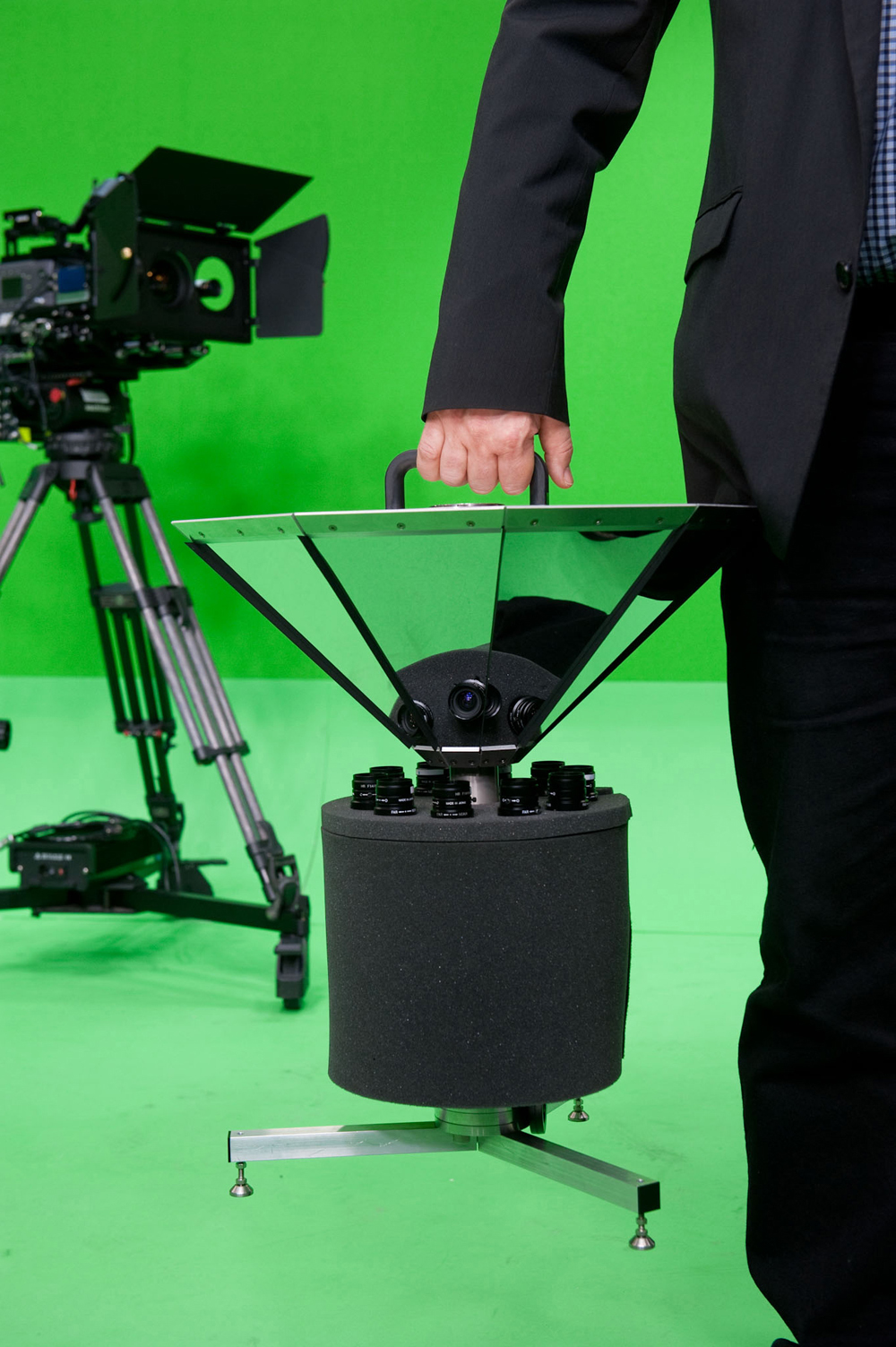Soccer matches and concerts from any angle you choose
In future, soccer and music fans will be able to choose the camera angle when watching live matches and concerts on TV, or even enjoy a 360-degree view of proceedings: all thanks to a new panorama camera that is small, robust, and easy to operate.
A roar of “Gooaaaal!” bursts out of living rooms and bars, before the players celebrate and the successful strike is shown again and again from various different angles. But viewers of soccer games often wish they could have a different view of the pitch than the one shown on TV during the rest of the game as well. This prospect is set to become a reality, with viewers becoming their “own cameraman”: using their PC, tablet computer, or even the latest TV sets, they will be able to choose the angle they wish to view on their virtual cameras – live and in real time! They will also be able to turn around in a virtual circle and take in a panoramic view of the pitch and the stands.
This is made possible by the new OmniCam360 camera: when positioned at the halfway line on the edge of the pitch, it shows a full panorama, in other words a 360-degree view. And what is more, the camera weighs a mere 15 kilograms, meaning it can be carried by a single person and mounted on a tripod. Compare that to its predecessor, which weighed in at a hefty 80 kilograms! The new camera is significantly smaller too: whereas the first model of the OmniCam took up around one-and-a-half square meters of space and at times obstructed spectators’ view in the stadium, the new version is no larger than an ordinary television camera.
Ten cameras for a panoramic view
In order to achieve a panoramic view, OmniCam360 consists of ten cameras. However, these cameras do not simply point in different directions, as is the case with Street View for example. Because the cameras are arranged in a star shape in such cases, the lenses are very far apart and every camera has a separate angle. This has meant that objects, especially ones near the interface between two images, can often appear distorted or are partially cut off or missing altogether – with the result that the panorama includes “seams” and distortions. The researchers working on the new camera have managed to solve this problem, which was caused by parallax error: “We’ve developed a mirror system that shifts the entrance pupils of the cameras to a common center,” says Christian Weißig, project manager at the Fraunhofer Institute for Telecommunications, Heinrich-Hertz-Institute, HHI in Berlin, where the camera was developed. This mirror system guides the action (the soccer match, say) onto the cameras in such a way that they all have exactly the same perspective. Or rather, almost exactly the same. The researchers intentionally built a tiny “error” into the new OmniCam that ensures the individual camera images overlap by at least a few pixels. The software is then able to merge the images without any seams. If the pixels did not overlap, there would be a small gap in the image at the seam, which would interfere with the panoramic view. By contrast, the tiny shift in perspective is not even noticeable to the viewer.
Another advantage of the mini OmniCam is that cameramen can say goodbye to all those laborious calibrations: with previous technology, the different cameras had to be matched to each other before panorama recording could begin. Which camera had which angle? How exactly did the individual lenses have to be aligned? And so on. Now with the OmniCam it’s a matter of unpacking the camera, connecting it up, and away you go. All thanks to an innovative technique for fixing the ten cameras to a special holder. “By means of optimized design, we’ve managed to do away with time-consuming calibration – and we’ve dramatically reduced the size,” says Weißig. “This also allowed us to make the OmniCam a fraction of the weight of its predecessor model.”
The usefulness of the panorama camera is by no means limited to sporting events. The researchers have also recorded concerts with it, with three cameras placed on the stage and three in the audience. In future, music fans will be able to enjoy such concert recordings “from all angles” via a special app. In a current project, the researchers are planning to transmit a concert by the Berlin Philharmonic live all the way from Berlin to Japan. The 360-degree system can be seen from September 13 to 17 at the IBC trade fair in Amsterdam (Hall 8, Booth B80).
